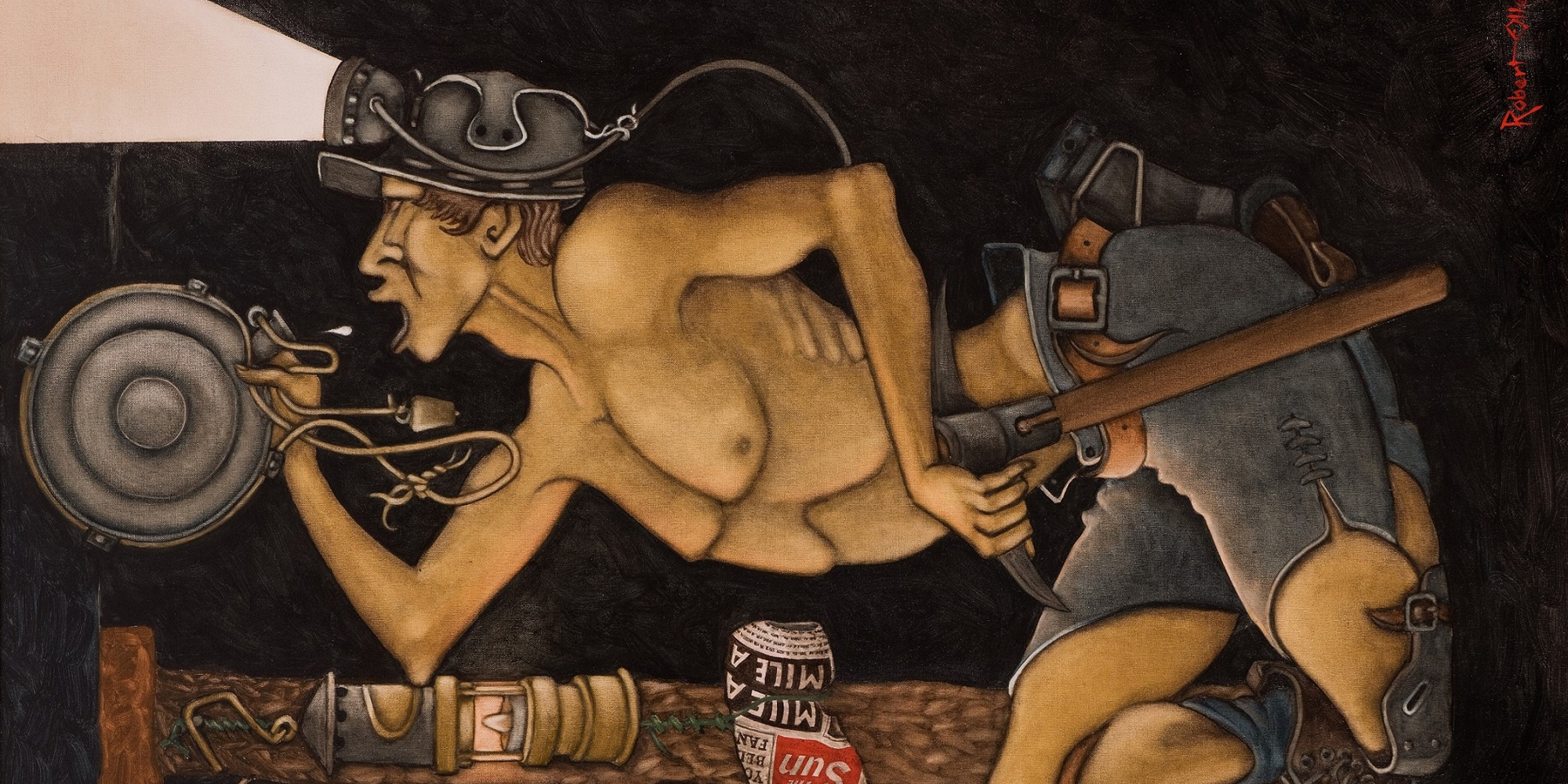Blog:
Bob Olley
The former miner explains why art is the only way to represent life down the pit
Standing in my best suit and with the remnants of a Fry’s Chocolate Cream bar hastily wiped from my mouth, I wrote “I can read, write and do simple sums” with a pencil stub.
With that, my interview was over. I would report to Whitburn Colliery in South Shields on Monday morning to join my father, and the scores of men before him, to work as a coal miner.
It was 1957. I was 17 and ready to follow the path deep underground alongside nearly every other boy in my class at school. But I could do so much more with a pencil than confirm my literacy on a scrap of dusty paper.
From filling school books with illustrations to a short-lived but much loved stint as a sign-writer, I had always expressed myself best through art. And like many of the men who hewed and hauled coal, I found the only way to articulate life underground, a world simultaneously inhospitable and full of life, was to draw it.
Unlike many heavy industries, the machinery and mechanisms of coal mining were almost entirely hidden underground, never seen by the majority of the population. The best way to tell someone about your day was to sketch it out for them. This led to some miners discovering within themselves a seam of talent as rich as the coal they hammered from the earth.
The monochrome grit of the National Coal Board films of the 1950s that documented life underground offered a glimpse into the hard graft, dangers and camaraderie of the colliery. But they didn’t bring to life the smell of a pit pony or the constant sound and frenetic energy of the ropes, belts and tubs that shocked me far more than the blinding dark on my first day in the coal mines.
The true expression of life as a miner could only come from the working men themselves, the mining artists who captured the faces and scenes etched into their memories to produce a unique genre of art.
Three miles out to sea, a long underground walk from the pit shaft, the work was tough and the conditions dangerous
A Bevin Boy and a member of the Spennymoor Settlement Sketching Club in County Durham, Tom McGuinness worked as miner for most of his adult life but was also a talented artist of some acclaim. I only met Tom once. He was a quiet unassuming man but the glowing light that shines through his underground scenes transports me back to the coalface at Whitburn Colliery.
Three miles out to sea, a long underground walk from the pit shaft, the work was tough and the conditions dangerous, but the camaraderie, friendships and laughter carried everyone through. And the warmly observed characters in fellow Spennymoor Settlement artist Norman Cornish’s work could be any of the men I worked, laughed and lived alongside for 11 years.
I didn’t know Norman, but I’m proud that my work now hangs alongside his at the Mining Art Gallery in Bishop Auckland, County Durham. Inside the gallery, the dark blue walls of the ground floor echo the deep dark of the mines, and with each viewing my own work brings back memories and moments, whether the earthy scent of an eager pit pony in North Yard Seam Derby or the miner with his bait, or lunch, wrapped up in newspaper in the Last Drop.
Upstairs the gallery opens up with light, the walls covered in vivid recollections of community life in the pit towns and villages. From the colour that filled every Durham street for the annual Miners’ Gala, to the warm glow of a miner’s cottage and the chatter of a smoky bar, it recalls a time now all but lost.
I still remember the name of every family living on the street where I grew up, a community where mining accidents and fatalities were met with collective kindness as families rallied round to help.
The gallery has brought together hundreds of works by mining artists and is a testament to the skill, technique and talent of these working men who chose to shine a light on their hidden lives. It is also a permanent reminder of the cultural heritage of the mining industry, and the thousands of people whose lives were touched by coal.
I’ve been asked whether we should stop dwelling on the past and the coal industry, and focus instead on the future. But coal was the lifeblood of the industrial revolution and powered the ships that traded across the globe. You have to know where you’ve been before you know where you’re going.
Most people today will have no easy way of understanding what it was like to be a coal miner. Many visitors to the Mining Art Gallery in Bishop Auckland won’t have been down a mine, or know anyone who has. But the work hanging in the gallery offers a route underground, a way to get as close as possible to that world and see it through the eyes of the miners themselves.
The Mining Art Gallery, part of The Auckland Project, is open daily 10am-4pm. For more information visit aucklandcastle.org/events/mining-art-gallery/

Leave a reply
Your email address will not be published.